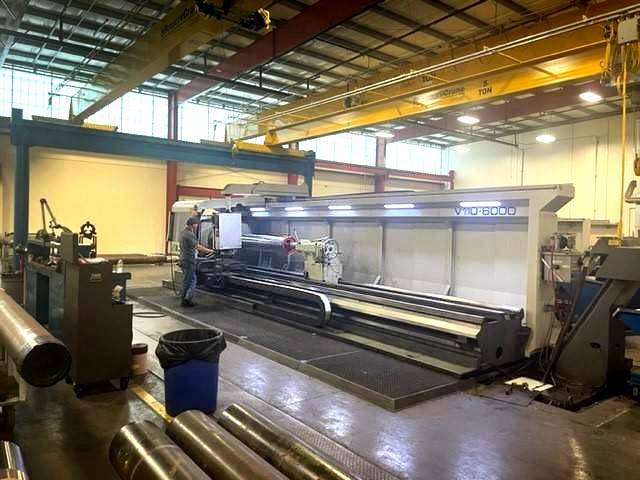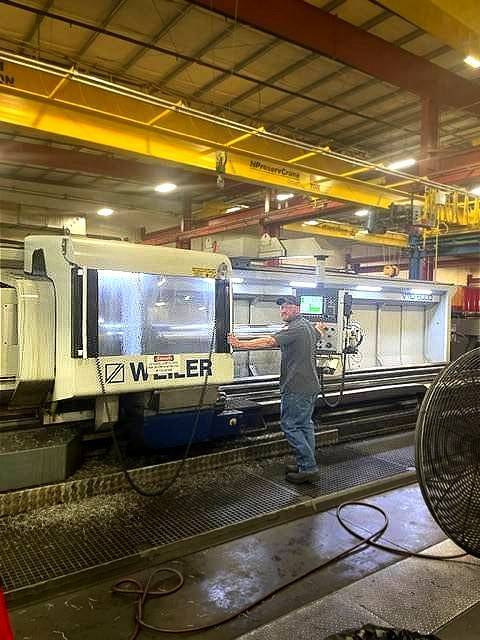
Case Study
Oilfield Service Company Expands Capacity, Eliminates Third-Party Processing with Weiler Lathes
RequestInformation
Problem
TAM International was spending too much on repairing and replacing old manual machines, and not getting enough return on their investment.
Solution
TAM International partnered with Methods Machine Tools to install Weiler lathes. The machines put greater control and versatility in operators' hands than manual lathes. The control enables a user to program a complex machining process without knowing a single M- or G-code line, making it a seamless transition for the company's machinists.
Results
- Cuts are now more rigid
- The Weiler machine removes greater amounts of material in less time
- Superior finishing capabilities eliminated costly hand-polishing from the job
- Increased productivity up to 40% on a Weiler V-110 lathe

Modernizing machine shop operations is a delicate process that requires a wholesale business analysis. Implementing new technology and streamlining operations are just a few steps toward improved machining operations and throughput, which can be an intensive undertaking.
Mark Newman, vice president of global manufacturing at TAM International, knew his moment had arrived in 2011. The company relied on manual machines to produce their portfolio of down-hole oilfield goods, but repairing and replacing the machines no longer made fiscal or operational sense. It was time to invest and upgrade.
However, this decision presented a new challenge: Implementing new machines without redesigning the entire manufacturing process.
“Traditional CNC machines got ruled out real quick. You’re taking a manual machinist, and it’s already a little bit of a challenge to get them to transfer over to programming,” Newman said. “It’s a big transition, or a seemingly big transition.”
With his choices narrowing, Newman researched solutions. He zeroed in on the Weiler E-90 lathe – a straightforward option with the rigidity, conveyor system, and efficient chip removal needed to manufacture TAM’s products, which include workovers components, corroded casing, and inflatable components to manage the flow of a well.
Weiler lathes put greater control and versatility in operators’ hands than manual lathes. The control enables a user to program a complex machining process without knowing a single M-code or G-code line. An operator punches in basic information such as the tool, direction of the cut, type of machining, and depth of cut. Operators can store each program as a cycle in a more extensive machining process.
However, Newman knew in practice that implementing new machining technology would be a more rigorous process given the upskilling required.
 Mastering Machine Controls for Maximizing Capacity
Mastering Machine Controls for Maximizing Capacity
To unlock the full ability of the machines, TAM turned to Methods for applications support and training.
Highlighting Weiler lathes’ flexibility to run manually or programmed on the user-friendly control, the platform had the capability specifically desire for shops like TAM that want the best of manual machines and the programmability of modern CNC machines.
“It’s doing the same functions, but you’re telling it what you want it to do rather than doing it yourself,” Newman said. “Operators and machinists know the terminology, they understand how to make the part, but they just have to learn how to make the machine do what they want it to do.”
Support for TAM began with Weiler applications and programming, ensuring the company had a solid foundation for success.
Methods’ Weiler product manager Johnny LeFlore created a manual for customers to flatten the learning curve. He started the effort in hotel rooms and spare offices on the shop floor, anywhere where the job took him, and anywhere he could find a few minutes to help someone. Over the years, it became a more formalized document. By the time it got to Newman and TAM international, it was an integral learning asset.
Primed with existing machining knowledge, help from LeFlore, and a guide for best machining practices, operators at TAM got the Weiler machine up and running.
Newman said switching from their older manual machines to the Weiler E-90 instantly improved TAM’s operations.
Cuts were more rigid, and the machine removed greater amounts of material in less time. And because the machine has superior finishing capabilities, TAM was able to eliminate hand-polishing from the job, a costly secondary operation.
“If you can get someone that has a desire to learn something new, they will increase their productivity upwards of 50% in some cases,” Newman said. “It’s already quick compared to setting up a CNC, but it provided even more than what we were doing with our old machines.”
The Weiler E-90 opened up TAM to more efficient manufacturing. As they expanded and opened up a new facility, TAM was ready to add to its machining capacity and take on larger workpieces that they historically outsourced.
A New Machine from an Old Friend
In 2013, TAM was faced with another issue: The company wanted to expand its machining capabilities and handle larger workpieces. The company collaborated with their machine tool dealer and ordered the Weiler V-110, an innovative 4-way bed lathe.
Equipped with the first V-110 in the U.S., TAM could machine large-diameter workpieces without an oversized spindle hole. This investment decreased their cycle time compared to older machines, lowered production costs, and put more control in the hands of the company’s machinists.
TAM was initially hesitant to purchase a machine that was unproven in the field. Still, the relationship they formed with laid a foundation of trust.
“Those guys, I consider them more than just my machine tool dealer. They’re friends. We believe in them. They’ve taken great care of us, and I believe Methods will continue to do that going forward.”
Putting similar jobs on a different brand of machine felt like a downgrade.
At one point, TAM had to move a job from the V-110 to another lathe. Even with comparable operators, productivity fell about 40% on the “brand x” machine.
“I can’t say enough about the V-110’s versatility, we’re able to machine 85 to 90% of the material all from one end,” Newman said. “Its capacity for boring and turning are hands-down better than any slant bed lathe I’ve ever owned.”